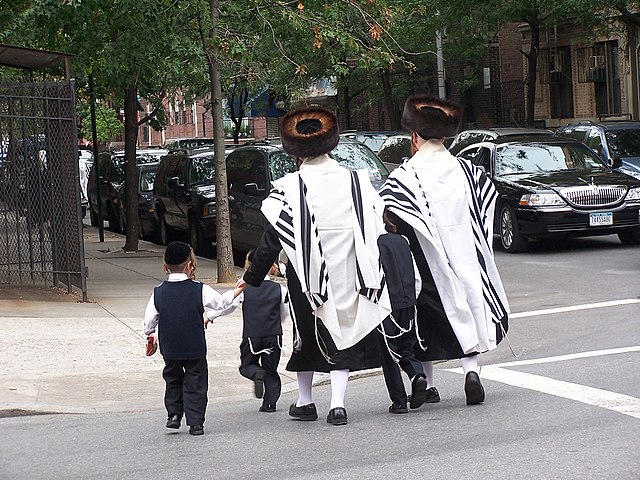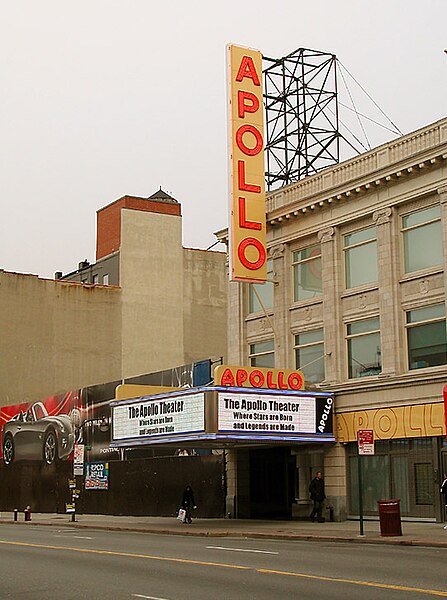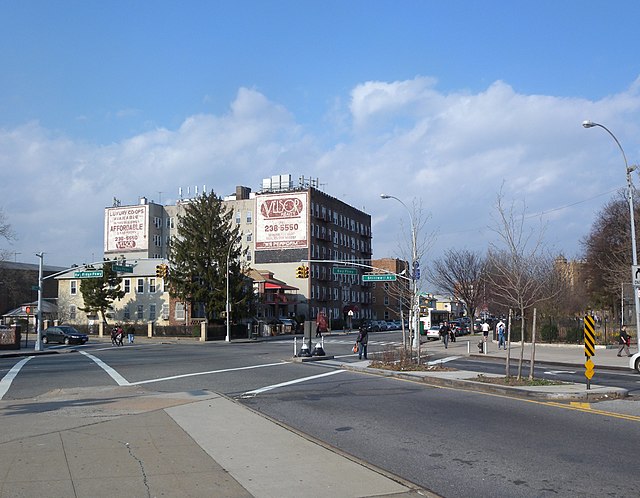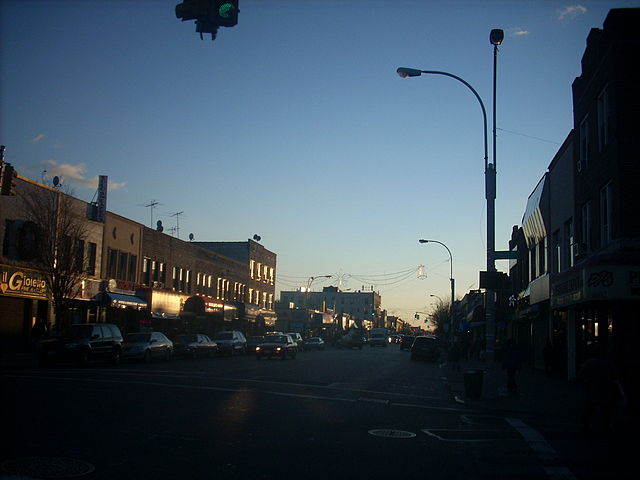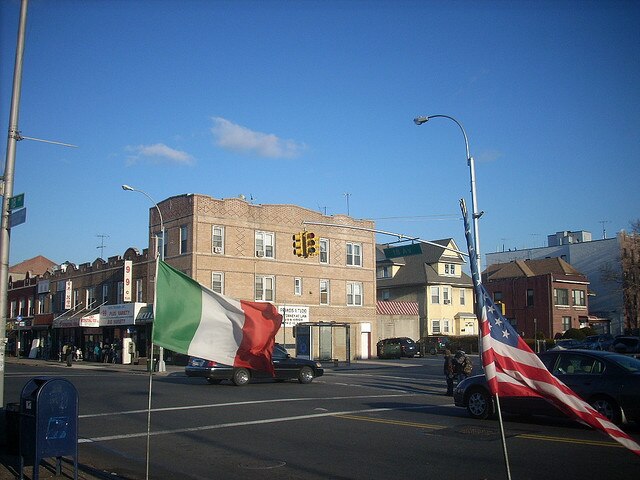New York City ethnic enclaves
Since its founding in 1625 by Dutch traders as New Amsterdam, New York City has been a major destination for immigrants of many nationalities who have formed ethnic enclaves, neighborhoods dominated by one ethnicity. Freed African American slaves also moved to New York City in the Great Migration and the later Second Great Migration and formed ethnic enclaves. These neighborhoods are set apart from the main city by differences such as food, goods for sale, or even language. Ethnic enclaves provide inhabitants security in work and social opportunities, but limit economic opportunities, do not encourage the development of English speaking, and keep immigrants in their own culture.
Brooklyn's Jewish community is the largest in the United States, with approximately 600,000 individuals.
The Apollo Theater on 125th Street in Harlem.
Stores in Le Petit Senegal.
An intersection in Manhattan Chinatown
Bensonhurst is a residential neighborhood in the southwestern section of the New York City borough of Brooklyn. The neighborhood is bordered on the northwest by 14th Avenue, on the northeast by 60th Street, on the southeast by Avenue P and 22nd Avenue and on the southwest by 86th Street. It is adjacent to the neighborhoods of Dyker Heights to the northwest, Borough Park and Mapleton to the northeast, Bath Beach to the southwest, and Gravesend to the southeast.
Bay Parkway in Bensonhurst
Stillwell Avenue at Bay Parkway and Bay Ridge Parkway
18th Ave and 66th St
18th Avenue and Bay Ridge Parkway

